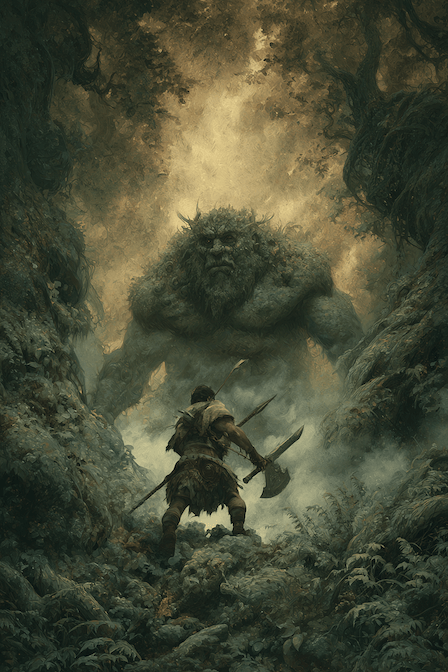Epic of Gilgamesh
Also known as: Gilgamesh Epic, The Epic of Gilgamesh, Sha nagba imuru, He Who Saw the Deep


Gilgamesh, king of Uruk, befriends the wild man Enkidu and together they win perilous fame. After Enkidu’s death, Gilgamesh seeks immortality, learns the limits set for humans, and returns to Uruk wiser, praising its enduring walls.
Description
The Epic of Gilgamesh is the classic Akkadian poem of kingship, friendship, and the human confrontation with death. The wild man Enkidu is created to challenge Gilgamesh’s tyranny; their struggle becomes a bond that carries them to the Cedar Forest to face Humbaba and, after rejecting Ishtar, to defeat the Bull of Heaven. Enkidu’s death shatters the hero, who roams the world for the secret of life, passing the scorpion guardians of Mashu, twelve leagues of darkness, Siduri’s counsel, and Urshanabi’s crossing over the Waters of Death to Utnapishtim, survivor of the primordial flood. Tested by sleep and given a chance through a rejuvenating plant, Gilgamesh ultimately fails to escape mortality when a serpent steals it. He returns to Uruk, accepting human limits and the legacy of works that outlast a single life.
Historiography
The Standard Babylonian version is a late second-millennium redaction commonly attributed to the learned scribe Sin-leqi-unninni, synthesizing earlier Old Babylonian episodes with extensive editorial refrains and wisdom themes. The best-preserved tablets derive from the Library of Ashurbanipal at Nineveh (7th c. BCE), supplemented by numerous fragments from Mesopotamian sites. Tablet XI famously embeds a flood narrative parallel to Atrahasis. Tablet XII, often viewed as an appendix, adapts an earlier Sumerian tale and sits outside the main narrative arc.
Date Notes
Old Babylonian poems (c. 18th–17th c. BCE) precede the Standard Babylonian recension traditionally attributed to Sin-leqi-unninni; tablet XI flood account shares material with Atrahasis.
Archetypes
Symbols
Major Characters
- Gilgamesh
- Enkidu
- Shamhat
- Utnapishtim
- Siduri
- Humbaba
- Ishtar
- Shamash
- Ninsun
- Urshanabi
Myths
- The Creation and Taming of Enkidu
- The Cedar Forest and Humbaba
- The Bull of Heaven
- The Death of Enkidu
- The Quest for Utnapishtim
- The Flood of Utnapishtim
- The Plant of Rejuvenation and Its Loss
Facts
- The Standard Babylonian recension’s incipit, often rendered "He who saw the deep," frames the poem as a wisdom tale.
- Sin-leqi-unninni is credited in ancient scholarly tradition with compiling the definitive version from earlier sources.
- Key tablets were excavated from the Library of Ashurbanipal at Nineveh in the mid-19th century and later pieced together from global collections.
- Tablet XI preserves a Mesopotamian flood account closely related to Atrahasis and predating biblical versions.
- Tablet XII reworks an independent Sumerian netherworld tale and is not integral to the epic’s main plot.
- Gilgamesh is linked to a historical king of Uruk (Early Dynastic period, c. 27th century BCE) known from Sumerian king lists.
- The epic blends heroic adventure with didactic reflections on mortality, fame, and proper kingship.
- Repetitive formulae, dream sequences, and direct speeches are key compositional features across tablets.
- The Cedar Forest episode situates heroic fame against divine boundaries enforced by Enlil and the council of gods.
- Modern reconstructions synthesize Akkadian fragments from multiple periods, dialects, and provenances.